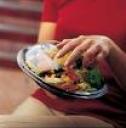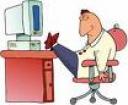 Good news for orange juice drinkers. More benefits come your way than just taking the extra Vitamin C with this new study looking at extra help of orange juices in prevnting kidney stones.
Good news for orange juice drinkers. More benefits come your way than just taking the extra Vitamin C with this new study looking at extra help of orange juices in prevnting kidney stones.
It is known in the medical community that potassium citrate found in most citrus juice can slow down formation of kidney stones BUT are all citrus fruits the same?.
In a recent study by a team from the University of Texas Southwestern Medical Center at Dallas, published in Oct. 26 issue of the Clinical Journal of the American Society of Nephrology found that components found in orange juice can affect a juice’s ability to prevent stones. In the study the volunteers drank 13 ounces of orange juice, lemonade or distilled water three times a day with meals. They were also put on a low-calcium, low-oxalate diet, which also helps cut stone formation.
The Results:
- orange juice increased levels of citrate in the urine
- orange juice reduced the crystallization of uric acid and calcium oxalate which are the most common components of kidney stones.
- Lemonade did not increase citrate levels.
One possible explanation as to why OJ is better than Lemonade is that the citrate in orange is accompanied by a potassium ion ( the same goes with Grapefruit) while the citrate in lemonade and cranberry juice is accompanied by a hydrogen ion. The problem with hydrogen ions is that they counteract the beneficial effects of high citrate content while potassium ions do not!!!
So…. for those with risks to develop Kidney stones, here’s one that we can incorporate in our diets! One that we can enjoy every morning with our breakfast!
An OJ Each Day May Prevent Stones Today!
















 Know The HEALTH FACTS ... Because WEALTH THRU PERSONAL HEALTH is a COMMITMENT... NOT A CHOICE!
Know The HEALTH FACTS ... Because WEALTH THRU PERSONAL HEALTH is a COMMITMENT... NOT A CHOICE!
 The Total Number of Visitors to the site since August of 2006
The Total Number of Visitors to the site since August of 2006










